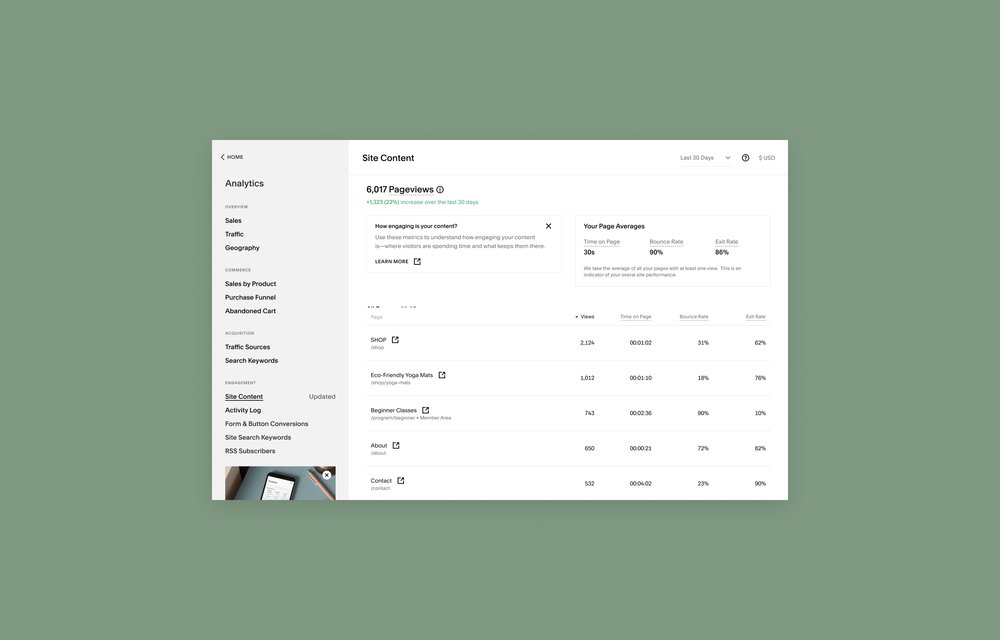Get started selling products online with our free downloadable workbook.
The email you entered is invalid.
Thank you for subscribing.
By entering your email, you indicate that you have read and understood our Privacy Policy and agree to receive marketing from Squarespace.
Selling clothes online is a smart way to reach new customers and build a clothing brand without having to invest in brick-and-mortar space or commercial real estate. It’s also an opportunity for passionate creators and independent makers to channel their talent into a business; in 2020, ecommerce made up nearly half of all apparel sales in the United States. Here are some tips for how to sell clothes online.
Develop a point of view
No matter what you want to sell, every successful business starts with a vision. Decide if you’re going to be making clothes yourself, producing them in partnership with a manufacturer, or curating a collection of wholesale-purchased or pre-owned items. If you’re starting a t-shirt shop, are you focused on sustainable basics or snarky graphic tees? If your focus is vintage, can you specialize in a particular decade? Tightening the focus of your aesthetic will help you stand out from other sellers.
Tell the world about your unique point of view on your website, social media, and wherever else you post online. Creating social stories and other content that captures the aesthetic of your new clothing brand will help customers get to know you and keep them coming back for more.
Consider an inventory-free strategy
Think about the best business model for your online clothing company. Many apparel businesses face unique inventory challenges because serving a broad audience of customers means stocking not only a wide range of items, but also a wide range of sizes for each item. For smaller brands or independent sellers, managing that much inventory can be tough. That’s why selling non-physical items—like fashion classes, styling subscriptions, or community memberships—can be a great option for people who sell clothes online.
For fashion businesses that don’t have the physical space or the bandwidth to manage inventory, print on demand is also incredibly popular. Customers buy clothes on your website, then your print on demand provider produces each item in response to those sales, and packages and ships each order directly to customers. Squarespace’s Custom Merch makes that process easy with a seamless integration between your online store and leading print on demand provider Printful.
Integrate your shopping websites
There are plenty of platforms that cater to the fashion in-crowd, but it can be tough to stand out as a seller on those apps and marketplace sites. Integrate your online shop with your third-party seller accounts to make your job easier and eliminate the headache of managing multiple inventories, product lists, prices, and other product details.
Squarespace offers an Etsy Integration option, for example, so you can easily transfer all the product details from your Etsy inventory over to your website. You can also integrate your products with Meta to sell on Facebook and Instagram, or sync your product catalog with Google so that your products appear in the Google Shopping tab, Image search, and on YouTube.
Set customers’ expectations
Although shopping online has become the norm for many consumers, doing business with a new company or an unknown brand can still be nerve-racking. Encourage customers to trust you by setting clear expectations and letting them know exactly what they can expect. Good product photography is one great way to do that; post high-quality images of the clothes you’re selling, from close-ups of beautiful details—and any imperfections, if you sell vintage items—to zoomed-out shots of each item on a model or mannequin.
Use your product descriptions to share the details of each item’s quality, construction, sizing, and fabrics. If your customers are expecting a 100% cotton t-shirt but they get something made out of synthetic rayon, they’re likely to be disappointed; if your t-shirts are cut to be form-fitting versus loose and casual, that's also information potential purchasers will appreciate. Setting expectations with detailed photos and accurate descriptions can encourage trust, leading to happier customers and fewer returns in the long run.
Enabling the collection and display of product reviews on your store will also go a long way toward building trust with prospective customers. Even with high-quality product descriptions and photography, many people are more likely to trust the word of other customers by reading reviews before they decide to make a purchase. With the product reviews feature, you can automatically prompt your customers to review their purchases, making reviews an easy and effective addition to your online store strategy.
Make a plan for returns and exchanges
Since customers can’t try on a clothing item online, many do something called bracketing, meaning they purchase multiple size, color, and style options to try on at home and return anything that doesn’t fit or that they don’t like. In fact, clothes are one of the most frequently returned items on the market.
Plan ahead for that reality with a returns and exchanges policy that makes your life easier and helps customers feel comfortable shopping with you. Determine whether you will offer exchanges, refunds, or store credits, and set time limits that work for your business. While many larger companies have flexible return policies, smaller businesses might feel more comfortable with a steady 14-, 30-, or 60-day window.
Free shipping and returns over a certain total purchase amount is a common promotion offered to shoppers, but those costs are built into the original price of each item. Consider whether your profit margins can support that benefit and at what minimum purchase amount. Whatever you decide, make sure it’s easy for customers to find your policy on your website.
Ready to start selling clothes online?

